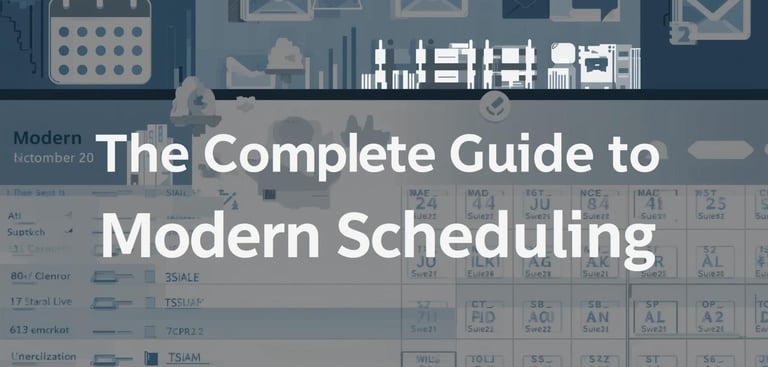Start sending invites for free - no card required - Click here
The Complete Guide to Modern Scheduling: Calendar Invites, Email Integration & Bulk Planning
In today’s digital work environment, scheduling has evolved into a central component of productivity. Meetings, appointments, interviews, workshops, and online events are all managed through streamlined systems that rely on calendar invitations. Whether you’re learning how to send calendar invite Gmail, trying to understand how to send a calendar invite on Gmail, or needing clarity on how to send a calendar invite on Outlook, the core concept remains the same: effective communication begins with proper scheduling.
BLOGS
11/18/20253 min read


In today’s digital work environment, scheduling has evolved into a central component of productivity. Meetings, appointments, interviews, workshops, and online events are all managed through streamlined systems that rely on calendar invitations. Whether you’re learning how to send calendar invite Gmail, trying to understand how to send a calendar invite on Gmail, or needing clarity on how to send a calendar invite on Outlook, the core concept remains the same: effective communication begins with proper scheduling.
This blog explores the fundamentals of digital calendar management, cross-platform behavior, and best practices for large-scale planning without promoting any tool or product.
Why Calendar Invitations Have Become Essential
Gone are the days when meeting arrangements were confirmed through long email threads. Modern scheduling solutions enable users to send invitations that automatically sync with digital calendars, set reminders, and update participants when changes occur.
Calendar invitations offer:
A uniform structure
Clear time and date information
Automatic notifications
Greater participation consistency
A shared understanding of expectations
From personal appointments to corporate events, digital calendars simplify day-to-day workflows and help users stay organized.
Understanding Email-Based Calendar Systems
Most calendar systems today are closely integrated with email clients. These systems handle the creation and distribution of invitations, enabling participants to accept, decline, or request new times.
The workflow typically includes:
Creating an event
Adding participants
Sending invitations through email
Syncing schedules across devices
Updating events as needed
Whether someone wants to send calendar invite Gmail or process invitations coming from Microsoft Outlook, the underlying structure is designed for universal compatibility.
Working With Gmail: What You Need to Know
Many users search for instructions on how to send calendar invite Gmail or how to send a calendar invite on Gmail because of the widespread use of this platform. Gmail’s ecosystem integrates closely with Google Calendar, enabling users to streamline their scheduling activities.
Some of the most important features include:
Automatic sync across devices
Multiple reminder options
Clear access to meeting attachments
Integration with online meeting platforms
Consistent event formatting
Google Calendar’s design makes it accessible for students, professionals, freelancers, and business teams alike.
Understanding Outlook and Its Structured Invitation System
Microsoft Outlook is heavily used in corporate environments. Users often look for clarity about how to send a calendar invite on Outlook and how to manage Outlook calendar invitations efficiently.
Outlook offers:
RSVP tracking
Recurring event scheduling
Built-in agenda fields
Room and resource management
Time-zone recognition
Outlook calendar invitations are particularly valued for maintaining consistency in organizational workflows, ensuring teams operate on synchronized schedules.
Best Practices for Creating Professional Calendar Invitations
Whether you’re scheduling a one-on-one meeting or planning a company-wide event, certain best practices ensure smooth communication:
1. Write Clear Event Titles
Titles should reflect the purpose of the meeting at a glance.
2. Ensure Accurate Timing and Time Zones
Time zone errors are one of the most common causes of missed meetings.
3. Use Descriptions Wisely
A concise agenda increases clarity and sets expectations.
4. Avoid Sending Excessive Updates
Condense updates whenever possible to reduce confusion.
5. Send Invitations Early
Allow enough time for participants to review and respond.
6. Add Attachments Before Sending
Documents or supporting files should accompany the initial invitation.
Managing Large Schedules and Calendars Bulk Requirements
For large events, webinars, or staggered scheduling, users often need calendars bulk solutions meaning inviting many participants at once or creating multiple events with similar structures.
Key considerations include:
Verifying recipient lists
Keeping event names consistent
Ensuring accurate meeting details
Avoiding overlapping schedules
Structuring reminders effectively
Even when scheduling at scale, clarity and uniformity remain crucial.
Common Issues With Calendar Invitations and How to Avoid Them
1. Invitations Not Reaching Participants
Check email spelling or spam filtering.
2. Incorrect Time Zones
Always verify your calendar’s default settings before sending.
3. Duplicate Entries
These occur when multiple calendar accounts sync incorrectly.
4. Missing Attachments
Always double-check files before finalizing the invitation.
5. Participants Ignoring Updates
Communicate important changes separately if needed.
Understanding these pitfalls helps ensure your scheduling strategy remains smooth and efficient.
Tips for Better Calendar Management
Keep calendars updated daily
Use reminders strategically
Remove outdated events
Sync all devices
Maintain a clear naming structure for recurring events
These simple steps contribute to a more organized approach to work and daily routines.
Conclusion
Digital scheduling touches every aspect of modern work and communication. From learning how to send a calendar invite on Gmail to understanding Outlook calendar invitations, mastery of these systems strengthens productivity and reduces confusion. Whether organizing individual tasks or handling calendars bulk arrangements, clear and thoughtful scheduling supports better collaboration and smoother workflows.
BulkCalendar.in
Send Bulk & Mass Calendar Invites Instantly
Contact us
Engagement
sales@letscalendar.com
+44 (0) 203 916 5117
© 2025. All rights reserved.
Help?
